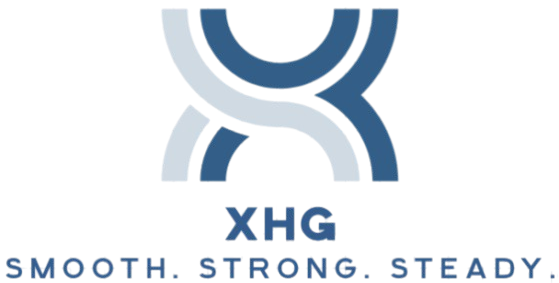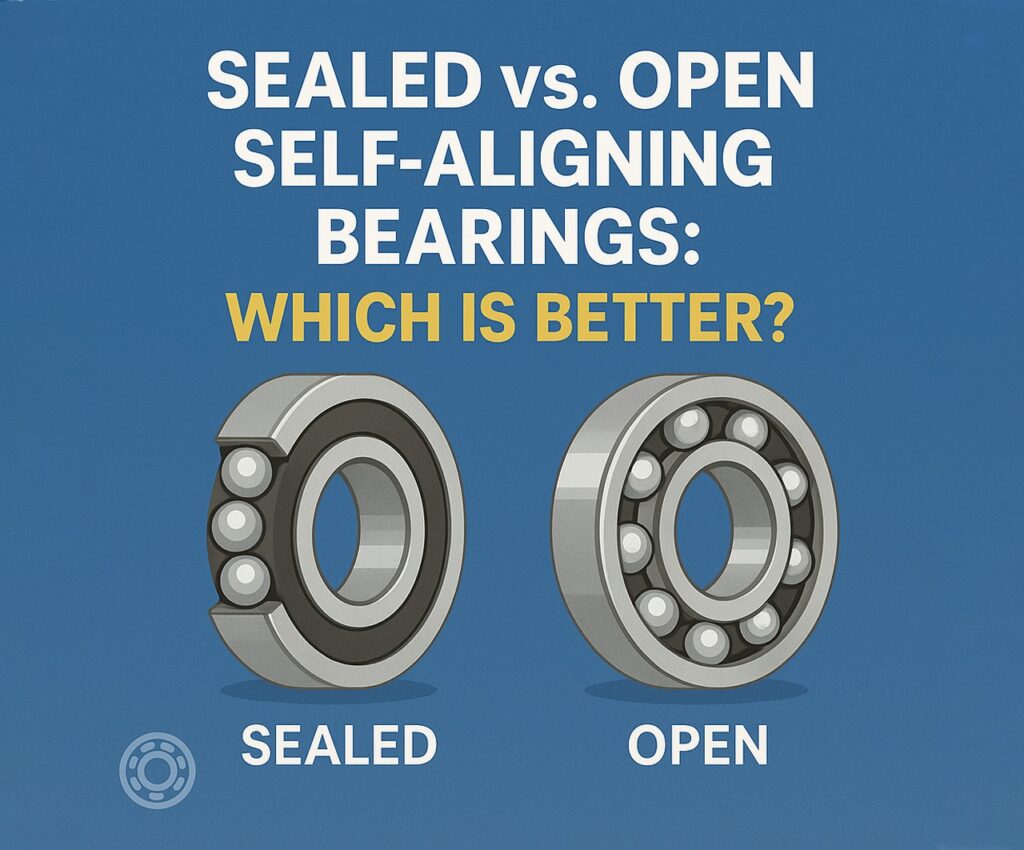When selecting the right bearing for a specific application, engineers are often faced with a fundamental decision: sealed or open? This question becomes particularly important when working with components like the self aligning pillow block bearing, self aligning roller bearing, and self aligning linear ball bearing. These self-aligning designs are engineered to compensate for misalignment, reduce friction, and extend the life of equipment, but the choice between sealed and open versions can significantly impact performance, maintenance, and durability. Know More
Understanding Self-Aligning Bearings
Self-aligning bearings are designed with an inner ring, outer ring, and a ball or roller assembly that can adjust itself to accommodate shaft deflections or housing misalignments. This makes them ideal for situations where alignment errors are inevitable.
- The self aligning pillow block bearing is widely used in conveyors and agricultural machinery.
- The self aligning roller bearing is perfect for high-load applications such as mining or steel production.
- The self aligning linear ball bearing excels in automation and precision-guided motion systems.
Each of these bearing types can be manufactured in sealed or open configurations, and the differences go beyond simple enclosure.
What Is a Sealed Bearing?
A sealed bearing includes built-in shields or seals—usually made from rubber or synthetic materials—to protect internal components from contamination. In self aligning pillow block bearing systems exposed to dust or moisture, sealing can significantly extend operational life.
Advantages:
- Better protection against dirt, dust, and moisture
- Lower maintenance frequency
- Improved lubricant retention
Disadvantages:
- Slightly increased friction due to seal contact
- Higher initial cost
Sealed self aligning roller bearing options are especially valuable in outdoor or industrial environments where contaminants are prevalent.
What Is an Open Bearing?
An open bearing lacks a seal or shield, which makes it more accessible for lubrication and inspection. This is particularly useful for self aligning linear ball bearing applications in controlled environments such as laboratories or cleanrooms.
Advantages:
- Lower friction
- Easier to clean and re-lubricate
- Typically less expensive
Disadvantages:
- Vulnerable to contamination
- Requires regular maintenance
Open bearings are best suited for environments where conditions are clean, dry, and stable.
Comparing Performance: Sealed vs. Open
Let’s look at how sealed and open versions of these self-aligning bearings compare in real-world scenarios.
1. Durability and Maintenance
Sealed bearings win this category, especially in dirty or wet environments. A sealed self aligning pillow block bearing installed on a farm machine will outperform an open version when exposed to mud or fertilizer.
2. Lubrication Efficiency
Sealed bearings come pre-lubricated and keep grease contained, reducing the need for frequent relubrication. Open self aligning roller bearing systems, while easier to service, require more routine attention to prevent premature wear.
3. Heat and Friction
Open bearings generally have less friction due to the absence of seals. In high-speed self aligning linear ball bearing setups, this can improve energy efficiency. However, the gain in efficiency must be weighed against the risk of contamination.
4. Application Specificity
- Use sealed self aligning pillow block bearing units in environments with unpredictable contamination.
- Choose open self aligning roller bearing systems when regular maintenance is part of the operational workflow.
- Opt for sealed self aligning linear ball bearing assemblies in automated machinery to minimize downtime.
Industry-Specific Insights
Agriculture
Agricultural equipment faces mud, moisture, and constant vibration. The sealed self aligning pillow block bearing is a must here. Open configurations would require impractically frequent servicing.
Heavy Industry
In mining or steel production, where self aligning roller bearing systems endure massive loads and shock, sealed versions add protection. However, open bearings may still be chosen when there is a dedicated lubrication system in place.
Automation and Robotics
Precision is king. For self aligning linear ball bearing units guiding robotic arms or CNC machines, sealed bearings reduce noise and wear while extending service intervals. Open types may be used in clean labs or electronics manufacturing.
Food and Beverage Processing
Hygiene is crucial. In food-grade systems, sealed self aligning pillow block bearing options prevent contamination of products while withstanding frequent washdowns. Sealed stainless steel options are often mandatory to comply with industry standards.
Environmental Considerations
Sealed Bearings:
- Eco-friendly due to longer lifespan and less frequent lubrication
- Less risk of lubricant leaks contaminating surroundings
Open Bearings:
- Easier to recycle due to fewer non-metallic parts
- Greater risk of grease leakage and environmental impact
In sustainability-conscious industries, sealed self aligning pillow block bearing and self aligning roller bearing options can contribute to greener operations.
Innovation Trends
With the demand for smarter, more reliable equipment, bearing technology is evolving. Manufacturers now offer hybrid designs that include:
- Removable seals for adaptable maintenance
- Smart sensors embedded in self aligning roller bearing cages
- Advanced polymer seal materials that withstand higher temperatures
- Compact, self-lubricating sealed bearings for low-noise operation in self aligning linear ball bearing platforms
In fact, some of the latest self aligning pillow block bearing units come with condition-monitoring systems that alert maintenance teams before issues escalate. This smart integration boosts uptime and extends life expectancy significantly.
Installation and Maintenance Best Practices
Proper installation is crucial to the performance of both sealed and open bearings. Misalignment or improper torque can compromise even the most advanced self aligning roller bearing design. Here are a few tips:
- Always clean the shaft and housing thoroughly before installation
- Avoid over-greasing, especially in sealed bearings
- Use tools designed specifically for bearing mounting and dismounting
- Follow torque and preload guidelines set by the bearing manufacturer
Routine maintenance should include visual inspections, listening for unusual noises, checking temperature, and confirming proper lubrication levels—especially in open self aligning linear ball bearing systems.
Making the Right Choice
When deciding between sealed and open self aligning pillow block bearing, self aligning roller bearing, or self aligning linear ball bearing systems, ask these questions:
- What is the operating environment?
- How often can the system be serviced?
- What are the performance and speed requirements?
- Is contamination a serious risk?
- What are the cost implications over the entire lifecycle?
A smart selection based on these factors will maximize equipment uptime, reduce total cost of ownership, and improve performance.
Final Verdict: Which Is Better?
The truth is, neither sealed nor open bearings are universally better—each has its place.
- Choose sealed self aligning pillow block bearing systems when exposure to contaminants is high.
- Use open self aligning roller bearing assemblies in systems with robust maintenance protocols.
- Select sealed self aligning linear ball bearing configurations for automated precision machines that demand reliability and minimal intervention.
Ultimately, the best bearing is the one that fits your specific needs, maintenance capabilities, and environmental constraints. Leading manufacturers are making it easier than ever to choose, offering modular options, hybrid designs, and smart components.
Take the time to analyze your application, consult with experts, and invest in the right type of bearing. The impact on reliability, efficiency, and long-term savings can be substantial.

